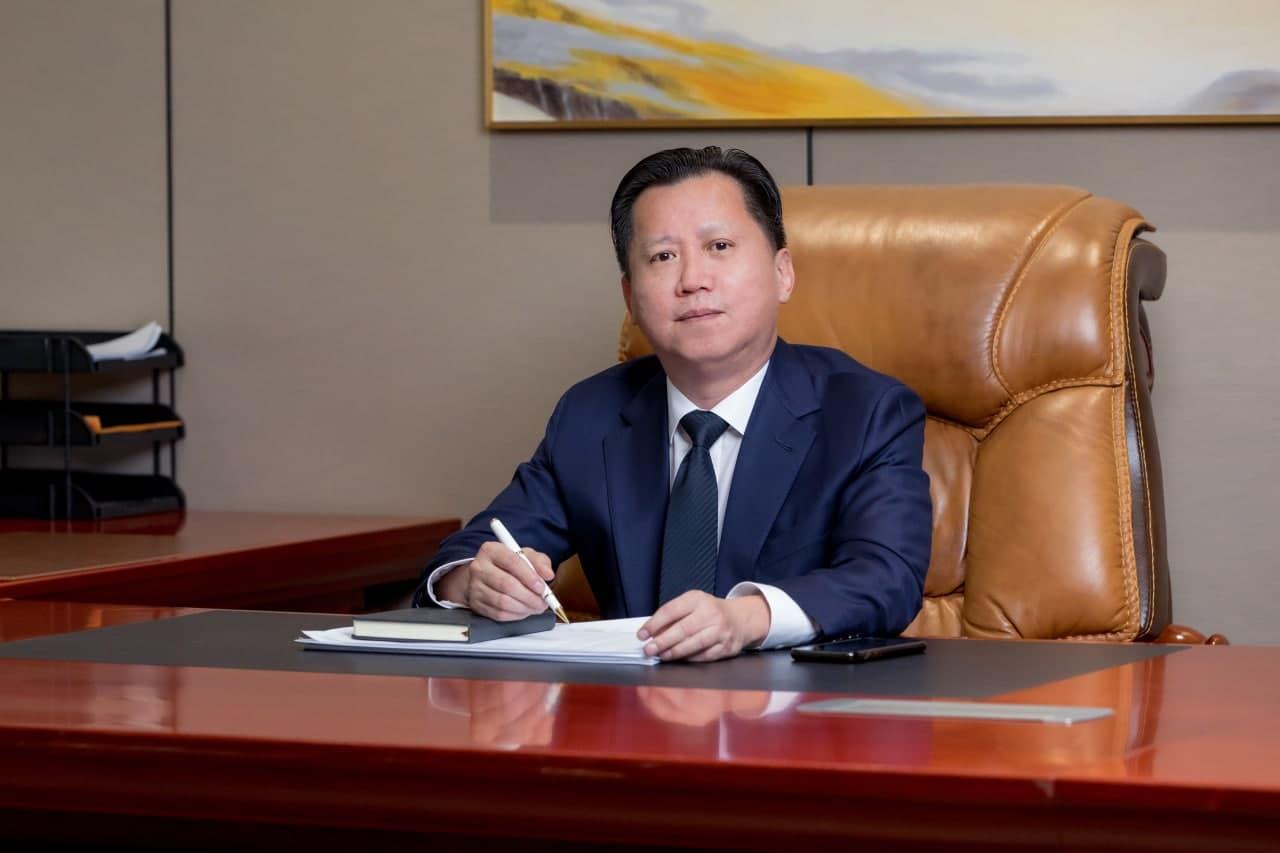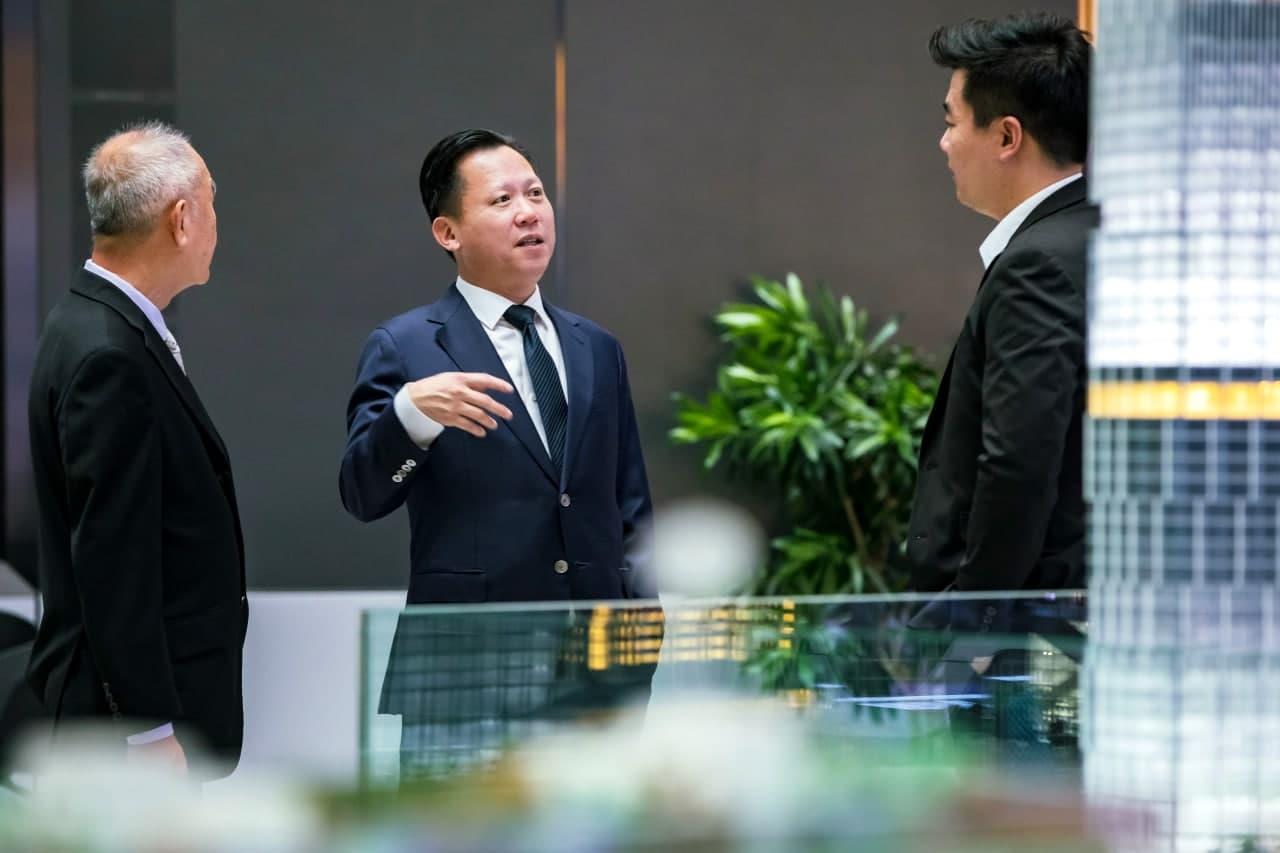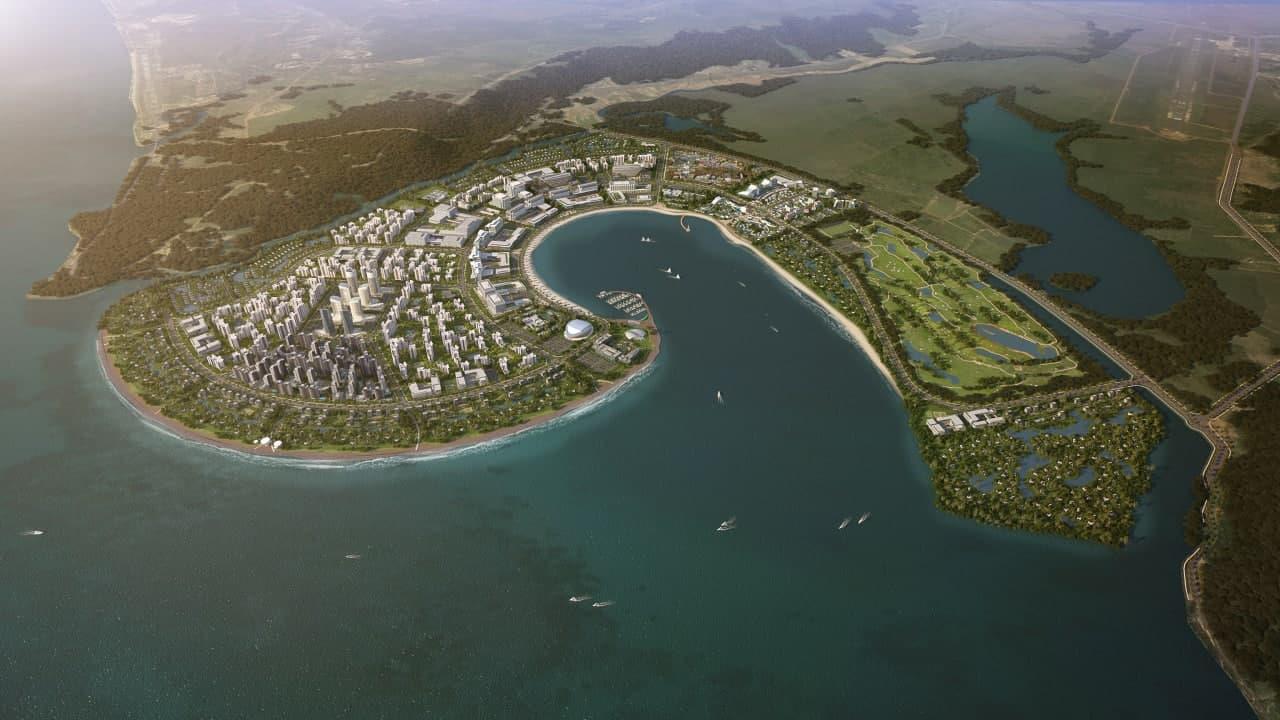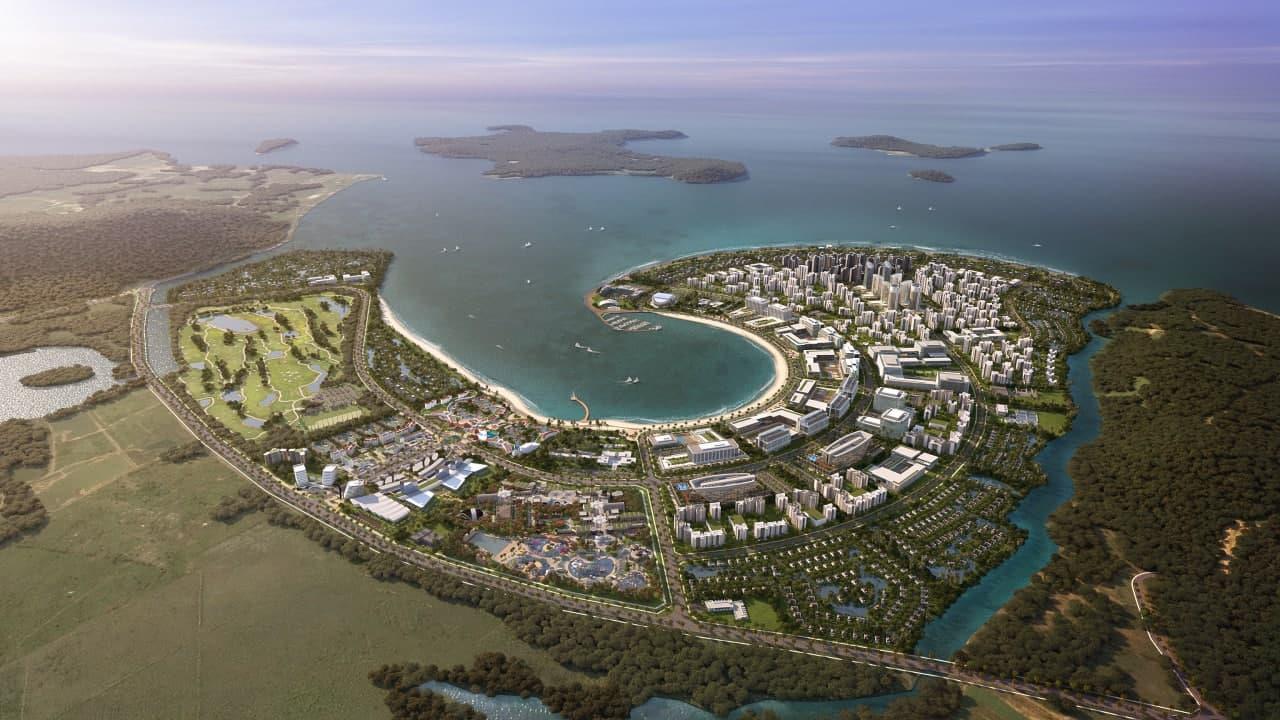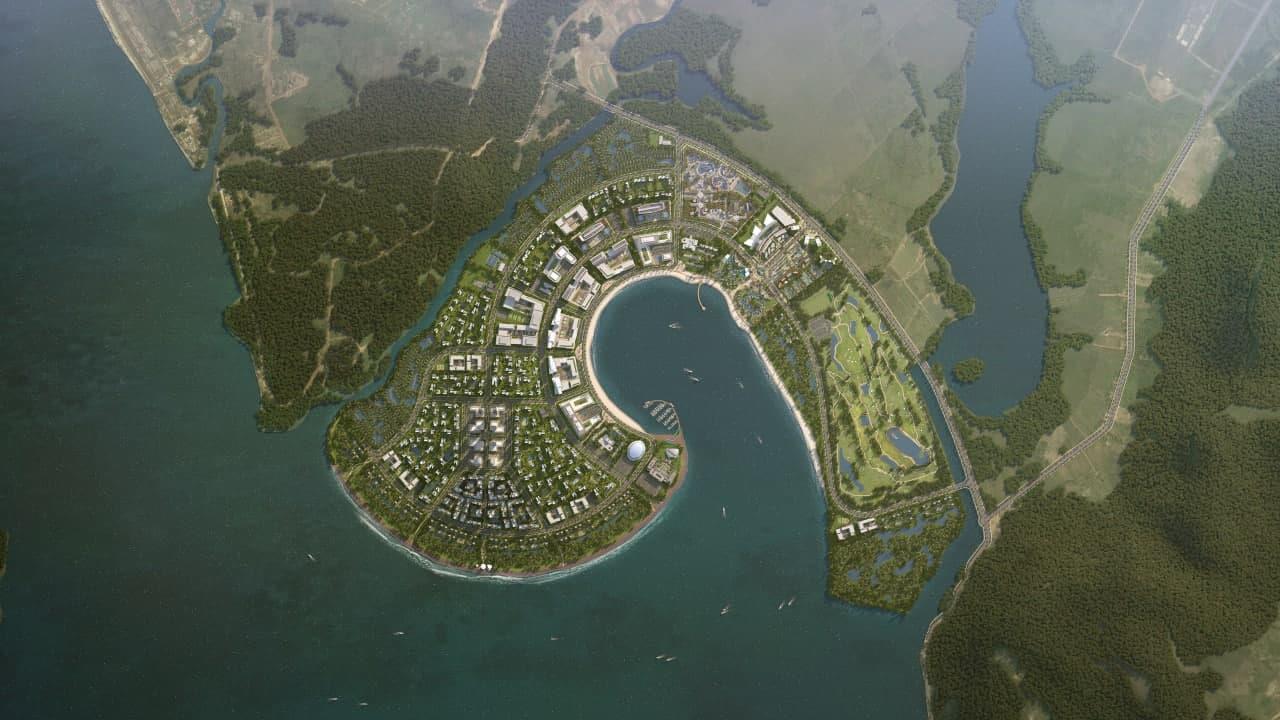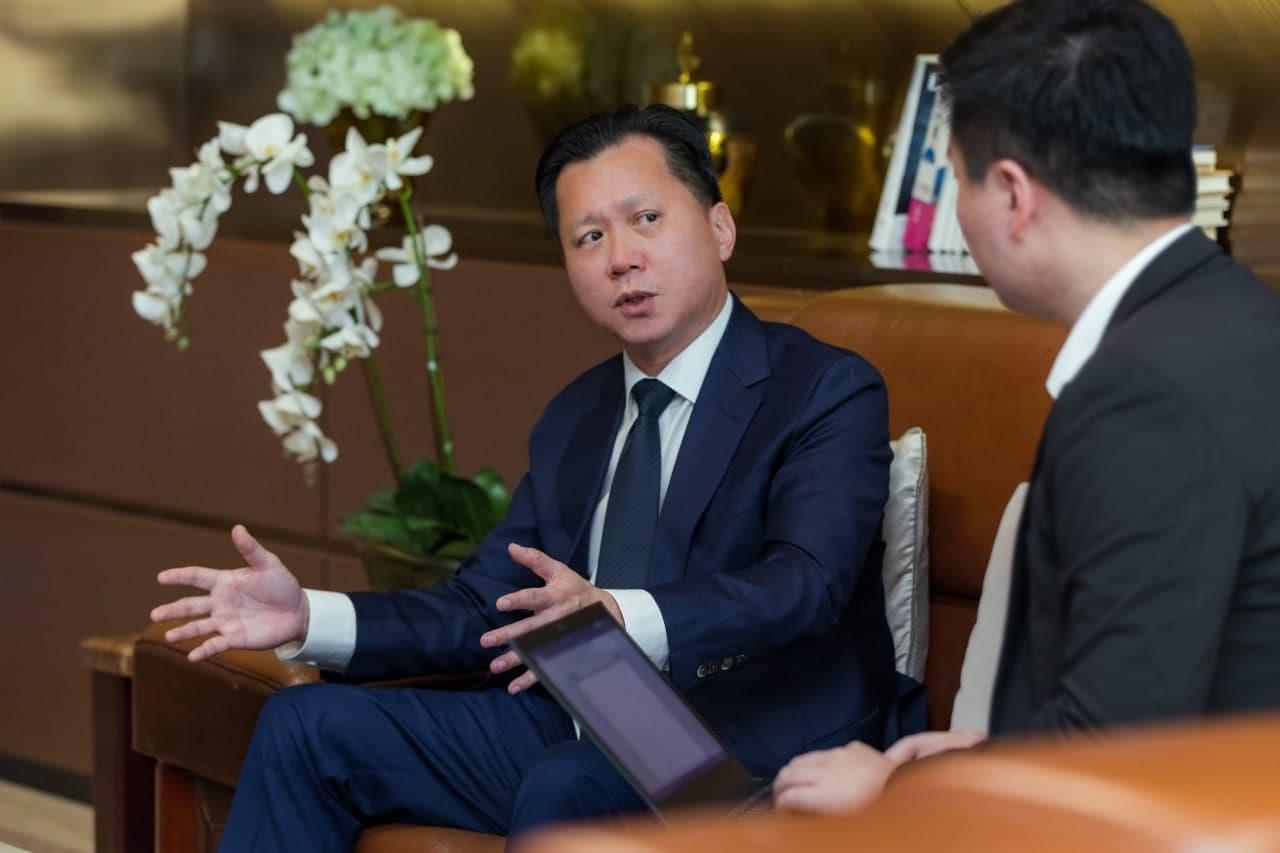Phnom Penh (FN), June 24 - Ream City, is a new ‘city within a city’ that is rising from an 834-hectare plot of reclaimed land in Sihanoukville, one of Cambodia’s largest cities located along the coast of the Gulf of Thailand. The US$16 billion project led by the Cambodian property development company Canopy Sands, is one of the largest real estate investments in the country and aims to become a major hub for tourism and create a large new integrated sustainable city.
Canopy Sands is a member of Prince Holding Group, one of the largest conglomerates in Cambodia, led by its dedicated chairman Neak Oknha Chen Zhi.
With Cambodia now in the grip of another wave of COVID-19 infections and the economy suffering from the loss of tourism amid the ongoing lock down, projects like the one in Sihanoukville are going to be critical in helping the country to get back on its feet after a difficult past 18 months.
Khong Weng Fook, managing director of Canopy Sands Development, is not discouraged by the current challenges. “These are difficult times right now,” he said, “but what we’re doing today is going to be part of the recovery when the pandemic is defeated,” he added. The Singapore-native spoke with our reporter about the project and how he sees it contributing to the region’s long term economic future.
The interview was lightly edited for length and clarity:
Chakriya: Before we get to the details about the Ream City project, it’d be great to learn more about you and the team behind this initiative. Tell us about the experience that you bring to this project and a bit about your background.
KHONG WENG FOOK: I was born and raised in Singapore and I also went to the school there. I was trained as an engineer and then later transitioned into the development sector. It’s been 26 years now since I’ve been in this industry and I’ve had the opportunity to work throughout Asia in Singapore, Vietnam, the Philippines and twenty years in China. I was involved in helping to build the Suzhou Industrial Park (SIP) and being here today in Cambodia reminds me a lot of China’s immense potential back in the 1990s and early 2000s.
You know, I spent 20 years working on that project in Suzhou and being here in Cambodia today, here in Sihanoukville, brings me back to those early days in China. It’s really interesting to see how many similarities there are. SIP was a government-to-government project, so obviously we worked very closely with local authorities, just as we’re doing here. Then there’s the question of time. While things no doubt move fast in China, building high quality developments like what we did in Suzhou takes years, even decades. You can’t rush it. And I’m seeing the same dynamics at play with Ream City and that’s why we’re taking sufficient time to do it. That was the key lesson I learned in Suzhou.
Now today, if you look at what happened in China, they’re now better at development than we are in Singapore! And that’s exactly why I am so excited to be in Cambodia today. This country is an exciting market where we can bring our expertise in urban planning and sustainable development to help Sihanoukville become a model city that can be applied across the country.
Chakriya: Given your experience working in the Philippines, China and throughout ASEAN, what’s the important lesson from all that you’ve done throughout the region that you’re bringing to this project in Sihanoukville?
KHONG WENG FOOK: First, you have to have a passion to serve. Because if your heart isn’t in it and you’re not fully committed to the project, then it’s really hard to succeed because building big projects like this isn’t easy. There are a lot of different stakeholders involved who have different policies and agenda. There are cultural differences that have to be factored in and, then of course, there are language barriers. So, we can’t come here and think because we’re big and we have access to lots of resources that we’re automatically going to be successful. It doesn’t work that way. It has to be win-win for everyone involved.
Chakriya: So, money alone doesn’t always lead to success?
KHONG WENG FOOK: No, not at all. If money’s all you have then you won’t succeed. You have to get the support from the government and also from local citizens. These relationships are really important because at the end of the day this is about partnerships. One doesn’t build big projects like what we’re doing in Sihanoukville alone. But more than anything, you have to respect the local culture, that’s the first thing and it’s true whether you’re in China, the Philippines and certainly here in Cambodia.
Chakriya: That's a good lesson. With that in mind, then, tell me about what you’re doing to work with the local community and the government on the Ream City project?
KHONG WENG FOOK: The first thing we had to ask ourselves was whether this was going to be a quick turnaround project – just build and go – or whether we were committed for the long term. From the beginning, for us, we’ve always been committed to the long term. That’s why this community is so important to us and why we factored in all of the key stakeholders into the project’s master plan. We’re working with sustainability experts to ensure that right solutions for Cambodia are implemented from the very beginning. Things like traffic planning that encourage more biking and walking as part of an effort to reduce pollution from cars.
And because energy costs can also be quite high in Cambodia, we’re looking at lots of exciting ways to incorporate renewable energy and green technology that will not only be financially sustainable but to also ensure that Ream City contributes to a sustainable, green future. I want to bring the best practices in this field from China, Singapore, Hong Kong and the U.S. to here in Cambodia. Right now, I’m looking for experts in these regions to work together to help make this happen.
Chakriya: Inequality is a hot topic now in this whole region, particularly now amid the pandemic that’s had such a big impact on young people and their ability to advance in society. You and other planners behind the Ream City project have said that you want to use this opportunity to help foster a more inclusive, equitable community. How are you going to do that?
KHONG WENG FOOK: That’s a great question and you’re so right to point out how important it is, especially now when so many peoples’ lives have been disrupted by the pandemic. Just as ecological sustainability was a part of the master plan from the beginning, so were skills transfer, training and development which we see as something that we’re doing not just for our own benefit but to help the larger community. We have plans to build a training institute that will help to develop our service staff and build skills in the hospitality industry. We are also exploring and constantly looking out for local partnerships for vocational education which is great for young people in Sihanoukville as it’ll help better prepare them for a variety of job opportunities in the service industry, whether with us or someone else in the area.
This is such an important part of our mission that we’re inviting all of our stakeholders and the public at large to partner with us on this journey. To do that, we’ll soon publish our first ESG (Environment Sustainability and Governance) report that will demonstrate our commitment to the UN’s Sustainable Development Goals and our efforts to reduce inequality here in Cambodia.
Chakriya: Given the enormous scale of this project and everything you’re hoping to achieve, help me better understand where you see this going. When I come back to Sihanoukville in 2025, 2035 and again in 2045, what should I expect to see?
KHONG WENG FOOK: By 2025, you’ll see the first phase of Ream City complete with ready infrastructure and amenities, which will be very exciting. You’ll see a lot of locals coming to our development and employment levels will be growing, which will be a great addition to the local economy. And you’ll also see the benefits of what happens when a development company like ours is able to work closely with the local community and partners in government. Again, there’s no success without doing that well.
Then, 10 years after that, you’ll see what we call “Stage 1” crystallizing which is another 400-hectare development and when Stage 1 is done, again 10 years later, Stage 2 will start which is an additional 400 hectare, you’ll see a new city take shape.
Already, Ream City’s taking shape and it’s getting easier to get here from Sihanoukville, a mere 8 minutes from the airport now, thanks to some of the upgraded infrastructure in our area and that’s only going to improve more in the future. And then once the new Ream City is built in 15-20 years’ time, then we’ll see how the old city and this new city seamlessly complement one another. We have a lot of work, that’s for sure, but given the enormous potential of the people, the place and the project – well, it’s why I love what I do.
